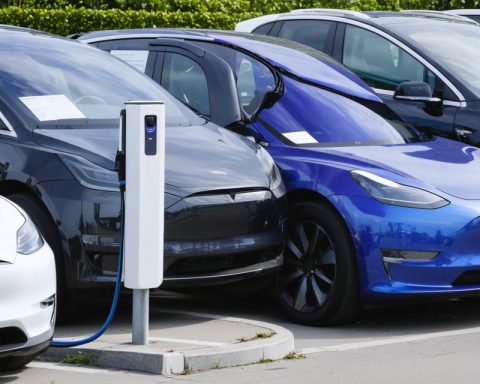- Indiana’s new bill seeks to classify natural gas and propane as “clean energy” to access federal clean energy grants.
- Supporters believe this could boost energy investment and align with federal funding opportunities.
- Critics highlight methane emissions from natural gas, which pose significant climate risks compared to carbon dioxide.
- Federal clean energy grants typically exclude natural gas, raising doubts about the bill’s financial benefits.
- Environmentalists worry this move could hinder progress in truly renewable energy sources like wind, solar, and hydrogen.
- Similar legislation in Ohio points to a trend of states defining their energy strategies against federal guidelines.
- The definition of “clean energy” is at a critical crossroads, prompting debates on sustainable futures.
- The ongoing conversation raises the question of prioritizing short-term gains over long-term sustainability.
In the halls of Indiana’s state legislature, a new bill is stirring a whirlwind of debate about the future of energy in America. Awaiting the governor’s signature, this bold legislative move seeks to classify natural gas and propane as “clean energy” sources, unlocking access to coveted federal grants designed for clean energy initiatives. Supporters argue it’s a savvy strategy to boost energy investment and align with federal funding streams. Yet, critics warn: not so fast.
Natural gas, though often touted as a bridge fuel to a more sustainable future, presents a paradox. While burning it produces less carbon dioxide than coal and other fossil fuels, an invisible menace lurks—methane. This potent greenhouse gas traps heat in the atmosphere at a rate far outstripping carbon dioxide, raising alarm among environmental scientists and advocacy groups.
Federal clean energy grants typically exclude natural gas from their criteria, meaning that despite Indiana’s legislative maneuvering, the actual greenbucks might remain elusive. Environmentalists assert that endorsing natural gas and propane as “clean” might derail genuine efforts to advance truly renewable technologies like wind, solar, and emerging hydrogen technologies.
Across the border in Ohio, similar legislation gained momentum last year, seemingly aimed at helping businesses navigate Environmental, Social, and Governance (ESG) standards. These policies increasingly guide investment decisions by accounting for the eco-social impact of corporate operations. The Ohio effort highlights a growing trend where states take energy destiny into their own hands, sometimes clashing with federal guidelines that still favor windmills over wells.
Amidst these swirling debates, one thing remains clear: the definition of “clean energy” is at a crucial crossroads. As the pressure to decarbonize intensifies, the nation faces a pivotal choice—embrace incremental changes, or leap courageously toward a greener horizon.
The unfolding conversation concerning Senate Bill 178 underscores a critical question. Are we ready to blur the lines to achieve short-term gains, or should we remain steadfast in pursuit of an authentically sustainable future? As Indiana stands poised on this precipice, the nation watches closely, questioning what shade of green we wish to call our future.
Is Natural Gas Really a Clean Energy Source? Indiana’s Controversial Approach Sparks Debate
The decision by Indiana’s legislature to classify natural gas and propane as “clean energy” is set to have wide-ranging implications for the state’s energy policy and possibly influence the national conversation surrounding energy sources. This move raises several critical questions about the future of sustainable energy, government funding, and environmental policy.
Market Trends and Industry Insights
1. Current Market Forecasts: While natural gas has been a cornerstone of energy production due to its abundance and relatively low cost, emerging market forecasts indicate strong growth in renewable energy sectors. According to the International Energy Agency, renewable energy sources are expected to account for nearly 95% of the increase in global power capacity through 2026, with solar leading the charge.
2. Industry Trends: Energy companies are increasingly investing in renewable technologies as consumer demand for green energy alternatives rises. Major utilities are expanding their portfolios to include more wind, solar, and battery storage options, anticipating stricter environmental regulations and growing ESG requirements.
Pros and Cons of Natural Gas as Clean Energy
Pros:
– Lower Carbon Emissions: Compared to coal and oil, natural gas emits 50-60% less CO2 when combusted in new and efficient power plants.
– Economic Benefits: The natural gas industry supports thousands of jobs and contributes significantly to the economy, providing a stable energy source as renewable technologies scale up.
– Reliable Energy Supply: Unlike some intermittent renewable sources, natural gas provides a reliable and flexible energy supply, meeting base-load and peaking power demand.
Cons:
– Methane Emissions: Natural gas extraction and leakage present a significant environmental risk due to methane, a greenhouse gas with a much higher heat-trapping ability than CO2.
– Delayed Renewable Adoption: Prioritizing natural gas might slow down investments in clean technologies, potentially compromising efforts to reduce long-term emissions.
How-To: Navigating the Clean Energy Grant Process
1. Eligibility Criteria: Begin by reviewing all federal grant criteria. Most grants favor projects that reduce carbon emissions significantly or involve innovative renewable technologies.
2. Application Process: Gather comprehensive project data, including environmental impact assessments and technological innovation details.
3. Partnership Opportunities: Collaborate with universities, research institutions, and clean technology firms to enhance application strength.
Controversies and Limitations
– Federal vs. State Policies: The divergence between Indiana’s legislation and federal standards highlights a growing tension in the U.S. energy sector, with states pushing individual policies that may not align with national priorities.
– Public Perception: Labeling natural gas as “clean” might mislead consumers about its environmental impact, the debate centering around whether states should lead with flexibility or face conformity to centralized criteria.
Security and Sustainability
The sustainability of natural gas as a long-term energy solution is debatable. While it offers immediate benefits in terms of supply stability, profound investments in carbon capture and storage (CCS) technologies would be necessary to align with sustainability goals.
Expert Recommendations and Quick Tips
– Advocate for Transparency: Encourage clear definitions and standards on what constitutes “clean energy” at both state and federal levels, reducing ambiguity for consumers and industries.
– Diversify Energy Sources: While utilizing natural gas as a transitional energy source, prioritize investments in wind, solar, and emerging technologies like hydrogen.
– Monitor Policy Developments: Keep abreast of legislative changes and funding opportunities, ensuring alignment with the most current energy initiatives.
The ongoing debate in Indiana mirrors a larger national conversation about the intersections of politics, economics, and environmental stewardship. As these dynamics evolve, stakeholders must engage in strategic planning and innovation to transition toward a genuinely sustainable energy future.
For further insight on sustainable energy strategies, visit the U.S. Energy Information Administration.














